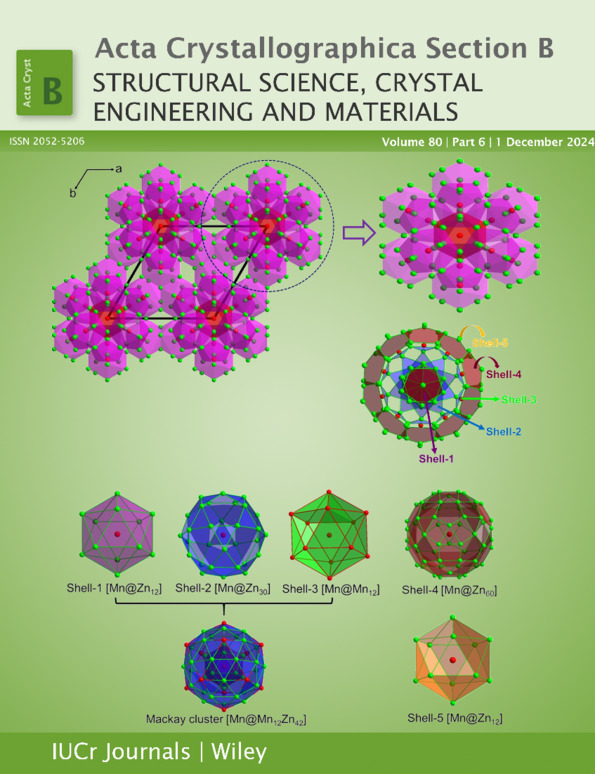Crystal structure of nickel orthovanadate (Ni3V2O8) at 299 (3) K and 1323 (8) K: an X-ray diffraction study
Abstract
Nickel orthovanadate is a promising material with potential applications in energy storage and photocatalytic devices. The crystal structure of Ni3V2O8 at 299 (3) K and 1323 (8) K was studied using X-ray powder diffraction. The sample was a single-phase orthorhombic kagome-staircase-Ni3(VO4)2-type structure (space group Cmca) at both temperatures. The phase purity and morphology was studied using energy-dispersive X-ray spectroscopy and scanning electron microscopy. The refined unit-cell parameters at 299 (3) K are a = 5.93384 (4) Å, b = 11.38318 (7) Å and c = 8.23818 (5) Å, and at 1323 (8) K are a = 6.02077 (7) Å, b = 11.48838 (7) Å and c = 8.32611 (9) Å. The obtained results indicate thermal expansion anisotropy, with a largest expansivity along a. Variations in Ni—O and V—O bonds with temperature are observed. The variation in the Ni—O bond is about one order higher in magnitude than that of the V—O bond, signifying the high rigidity of V—O bonds. The unit-cell size variations with rising effective ionic volume of the divalent A ion in the A3B2O8 family [A = Ni, Mg, Zn, Co, Mn (experimental data) and also A = Cu, Cd (theoretical data), B = V or As] are analyzed. Based on experimental and theoretical data, trends within the family are observed and the unit-cell size for reported solid solution of nickel (87%) and copper (13%) mixture in (Ni1–xCux)3V2O8 are predicted. Predictions are also provided for some hypothetical A3B2O8 ternary compound and solid solutions.




